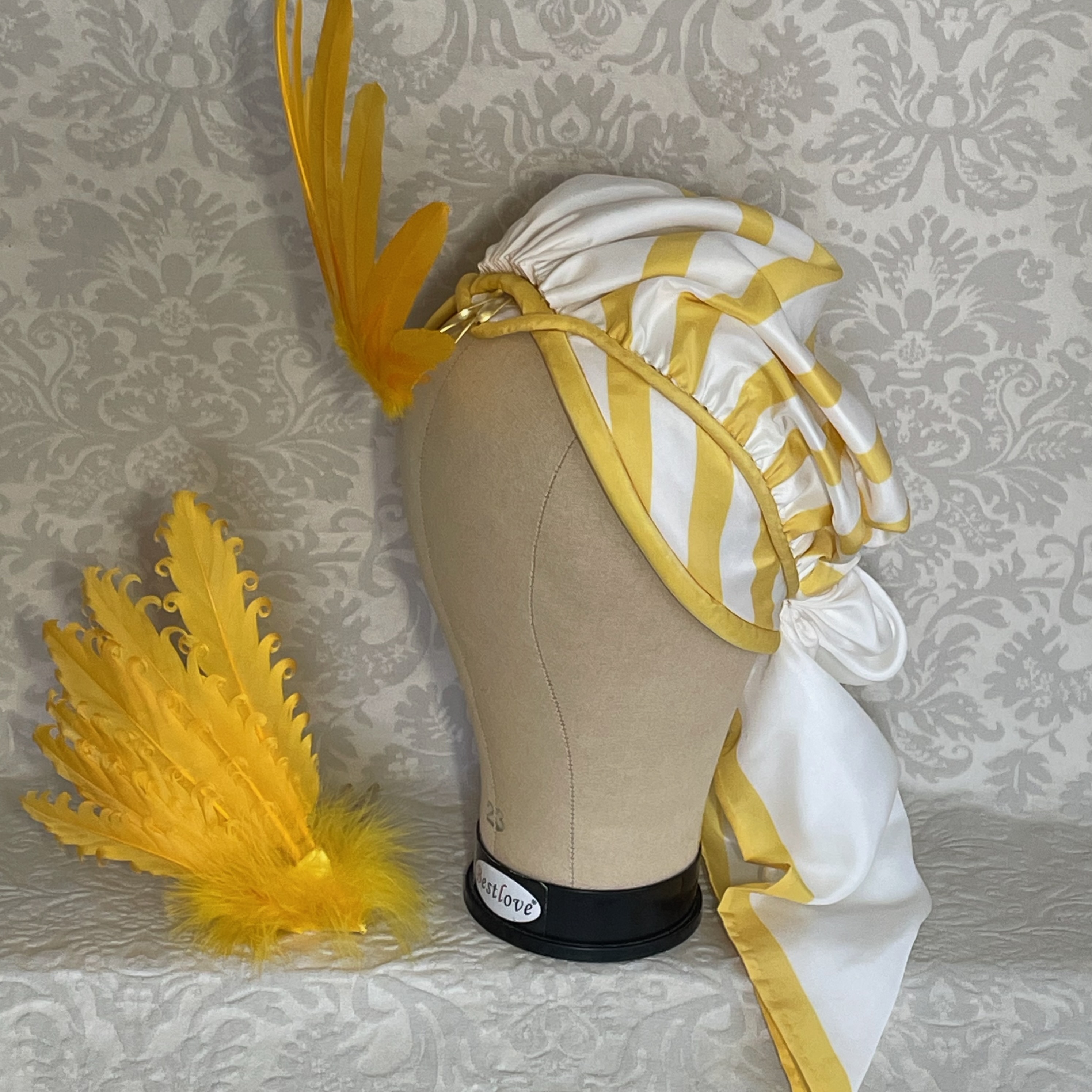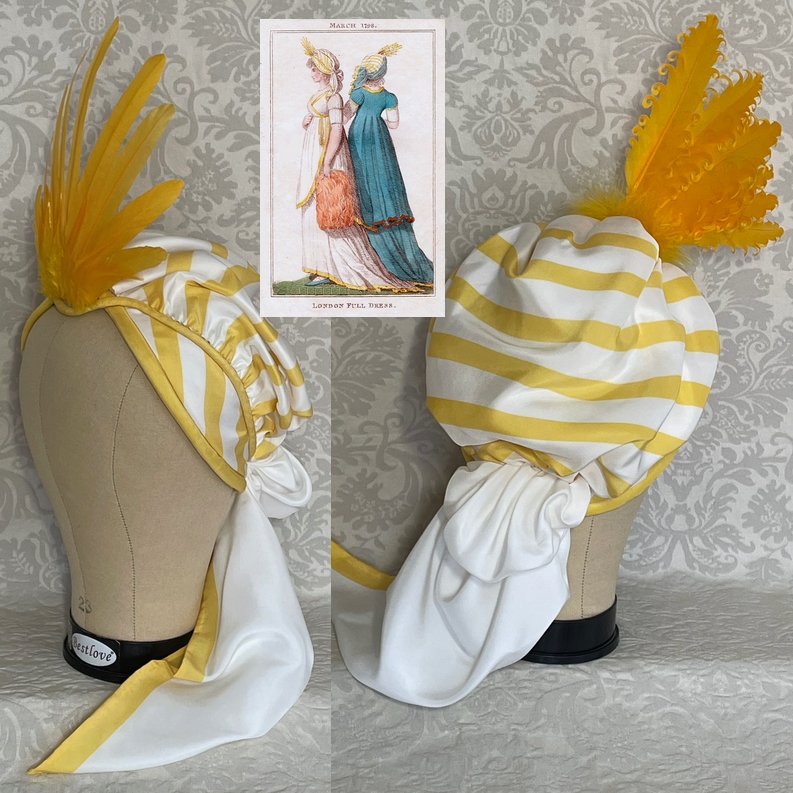
In order to make this 1798 headdress I needed to figure out a way to support these two different groupings of feathers. I chose to use my drilled hairpins (you can find them for sale on this page).
As usual I did the feathers first, I wanted to know they would work before continuing. I used primarily goose nagorie feathers for both ornaments. But the ornaments are made up of three species; Goose, Turkey and rooster.
Cut Nagorie
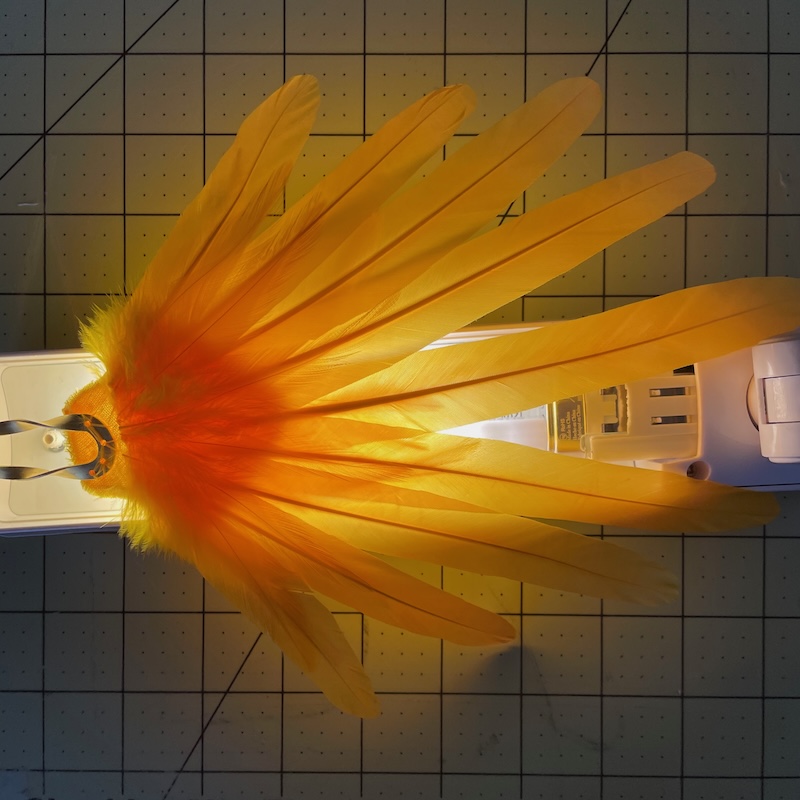
For the first ornament I hand picked and cut 9 feathers. They ranged from 9″ to 5″ tall and I trimmed the width down to ~3/4″ wide. Then I needed to mount them on something that would let them fan out like they are suppose to. I chose to use a piece of buckram cut in an arrowhead shape and wired with fine millinery around the outside edge and then, covered with fabric in a matching color.
The feathers were glued onto the upper part of the arrowhead shape while the tung part was left free of feathers. Some rooster feathers were added over the goose feathers and on the front and back to cover the stems and the fabric.
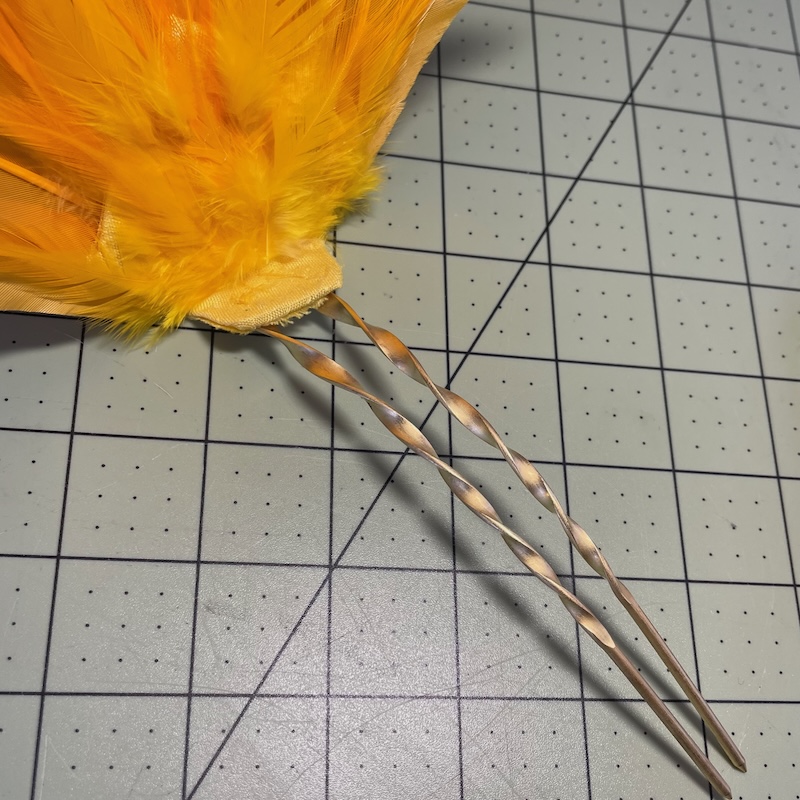
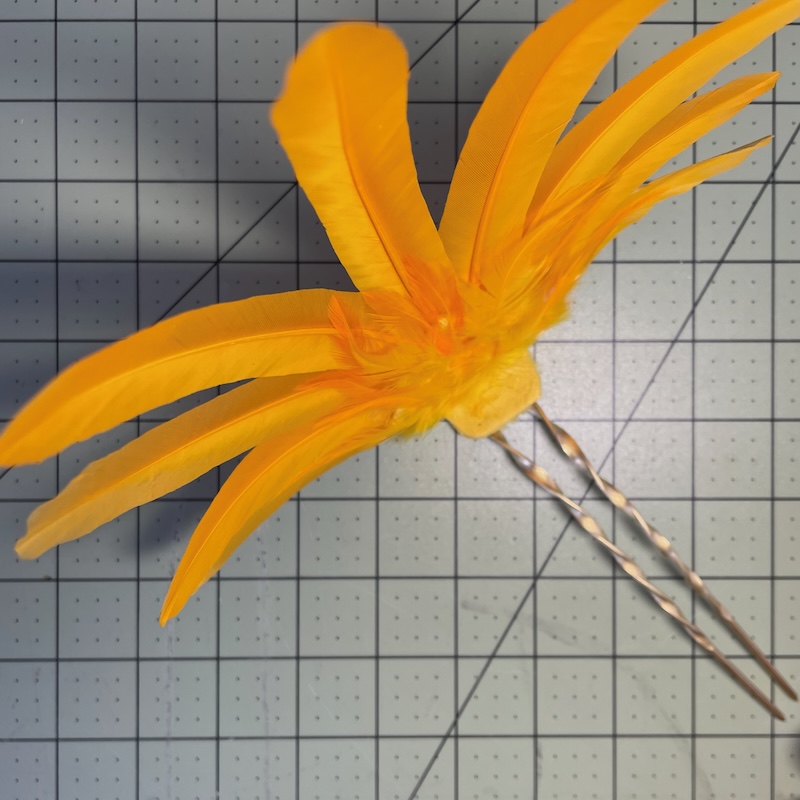
The bottom of the wired buckram which is securely sewn to the hairpin which is then bent at a 90° angle.
It can then be slipped into the headdress under the piping. I left a void where I did not sew down the piping to the fabric underneath.
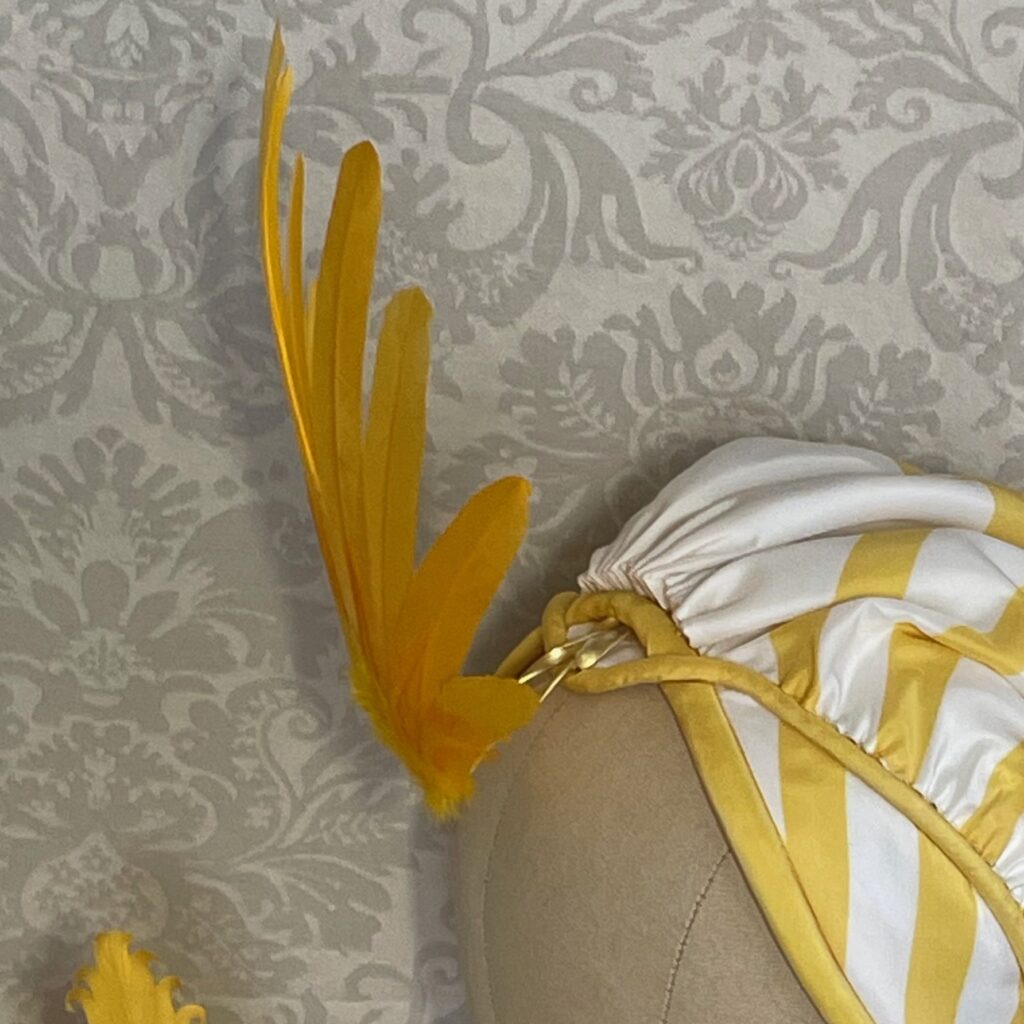
Curled Nagorie
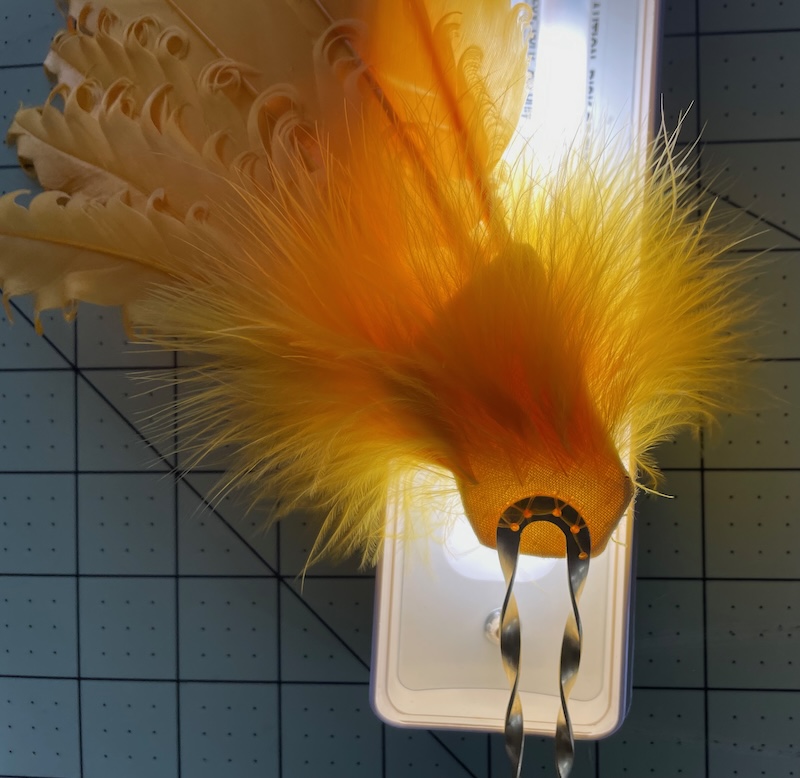
Because this set of feathers angles way to one side I needed a different shape buckram from the first one. It is similar to the first but with the right side cut away.
For this hairpin I needed 6 feathers grading from 9″ to 5″ tall. First thing was to curl the barbs. You can see how this is done in these pictures.
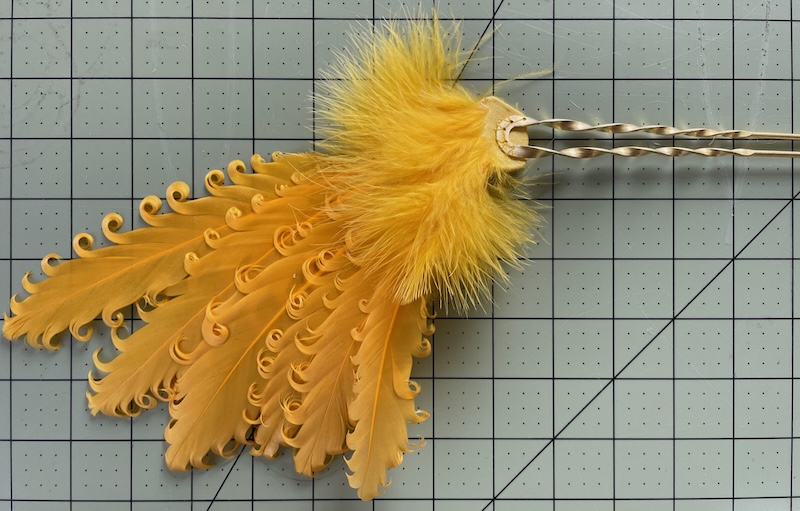
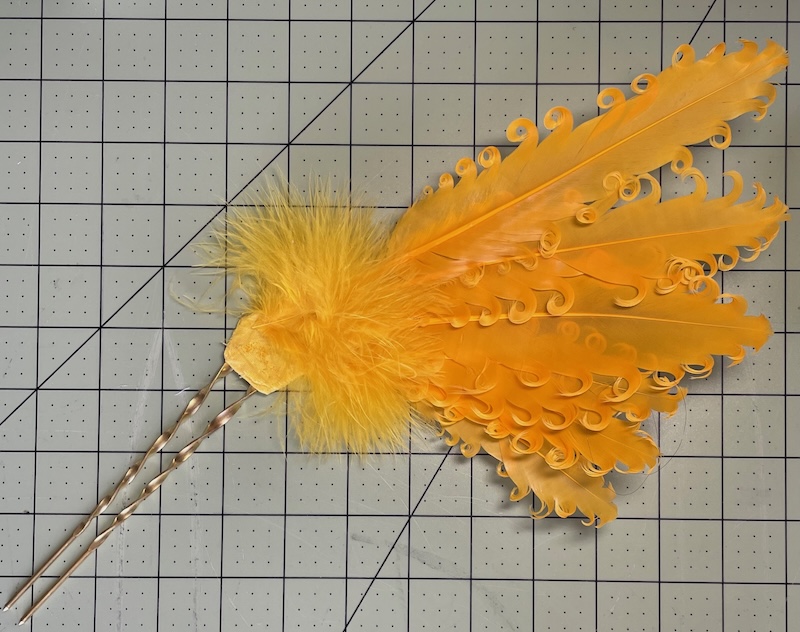
The goose feathers were glued to the wired buckram. Then some turkey down was glued to that to cover the stems and the fabric.
The hairpin and the wire on the buckram are bent to the right shape.
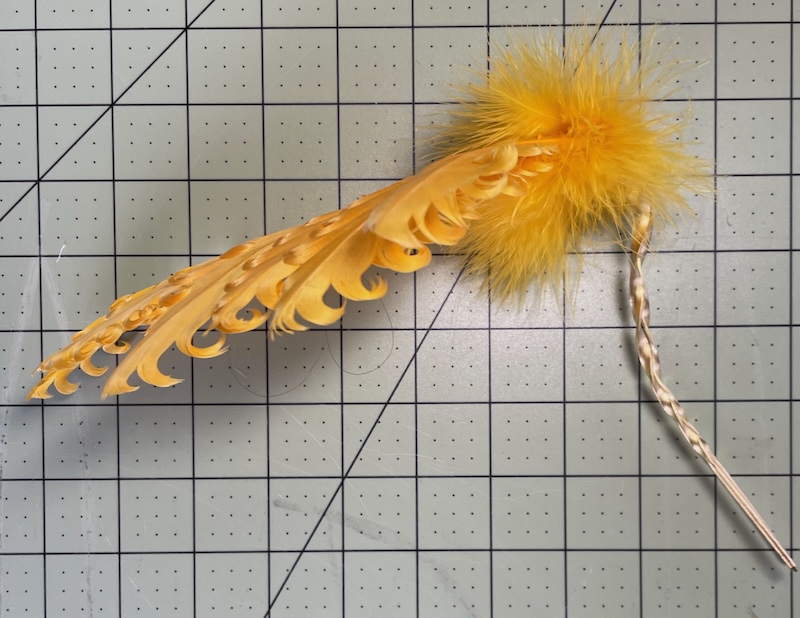
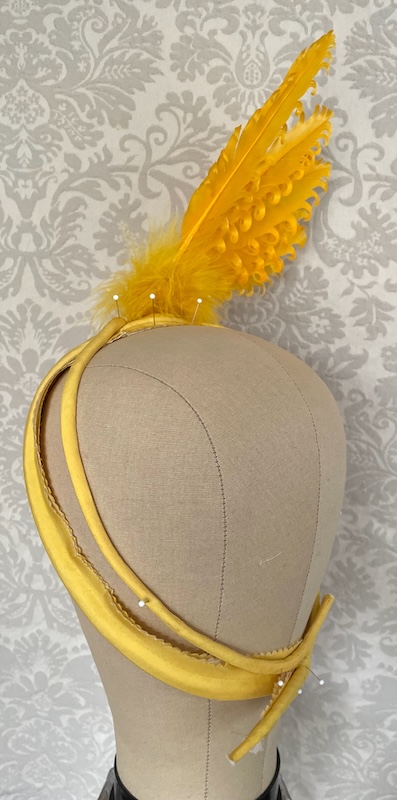
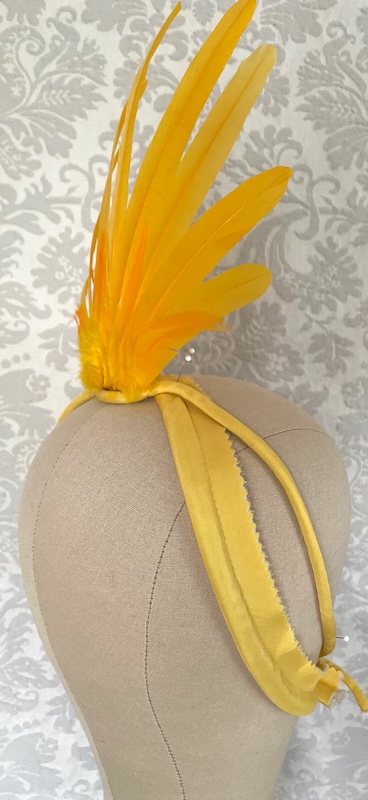
I needed to know these would work on the finished headdress so the first thing I did was to give them a try. Even before I sewed the feathers to the hairpin I could see that they would work really well by slipping the tung of the buckram under the piping and in the space between the narrow pipping and the wide.
This is what it looks like to slide the hairpin into the headdress to change out the feathers.
